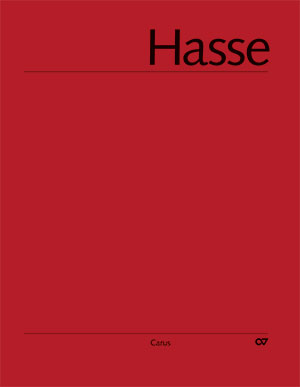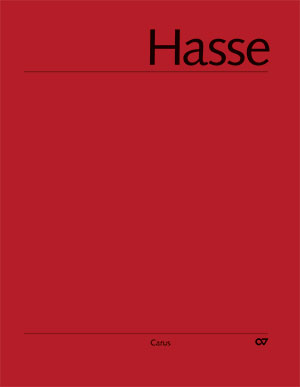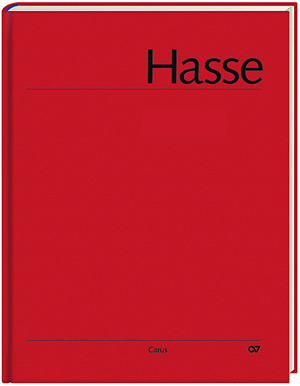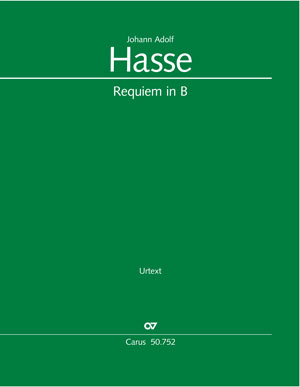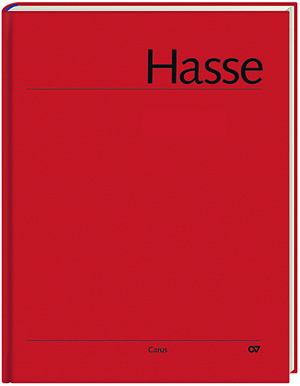
Requiem in C and B. Hasse-Werkausgabe IV/4
Johann Adolf Hasse, Kapellmeister at the Saxon-Polish court in Dresden, composed the Requiem in C major for the ceremonial exequies of the deceased Elector Friedrich August II in November 1763 in the Catholic Hofkirche in Dresden. With this work he composed a monument in music to his long-standing, generous employer, who was also King of Poland under the name August III: passionate choral movements, echoes of historic compositional styles, expressive vocal solos and arias which undeniably reveal Hasse the opera composer, and trumpets and timpani in the orchestra – all these are the ingredients of a “royal” Requiem Mass in the style of a Missa solemnis.
Hasse’s much smaller-scale Requiem in B flat, which we are now publishing for the first time, was presumably composed as early as the second half of the 1750s. Nothing is known about the occasion for which this beautiful work was composed, or even whether it was performed during the composer’s lifetime. Perhaps the Seven Years War, in which the electorate of Saxony was involved, prevented any performance. Several borrowings from it in his Requiem in C and in the later Requiem in E flat show that Hasse held the work in high regard.
The Hasse Works Edition (HWA) is published in collaboration with the Hasse-Gesellschaft Bergedorf e. V. and is intended to serve both scholarship and the needs of performing musicians with scholarly-critical editions of Hasse’s music.
Hasse’s much smaller-scale Requiem in B flat, which we are now publishing for the first time, was presumably composed as early as the second half of the 1750s. Nothing is known about the occasion for which this beautiful work was composed, or even whether it was performed during the composer’s lifetime. Perhaps the Seven Years War, in which the electorate of Saxony was involved, prevented any performance. Several borrowings from it in his Requiem in C and in the later Requiem in E flat show that Hasse held the work in high regard.
The Hasse Works Edition (HWA) is published in collaboration with the Hasse-Gesellschaft Bergedorf e. V. and is intended to serve both scholarship and the needs of performing musicians with scholarly-critical editions of Hasse’s music.
Purchase
Additional product information
Contents
-
Composer
Johann Adolf Hasse
| 1699-1783
-
Editor
Wolfgang Hochstein
| 1950
Frequent questions about this work
 There are no questions and answers available so far or you were unable to find an answer to your specific question about this work? Then click here and send your specific questions to our Customer Services!
There are no questions and answers available so far or you were unable to find an answer to your specific question about this work? Then click here and send your specific questions to our Customer Services!






